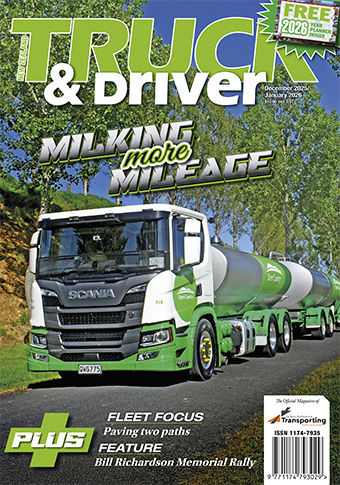Ia Ara Aotearoa Transporting New Zealand News


Transport fit for our future
Transport should be about what is in the best interests of connecting people and enabling freight to get to desired destinations. In theory, much of the transport investment is for inter-generational assets.
In recent years it has become deeply politicised, and we are losing integrity in the decisionmaking process. This has resulted in investment decisions being for political purposes, and many of these projects never come to fruition.
A modern transport system can mould together road transport needs, commuter movements, supply chains, advances in technology, economic growth and environmental concerns.
...Transport should be about what is in the best interests of connecting people and enabling freight to get to desired destinations. In theory, much of the transport investment is for inter-generational assets.
In recent years it has become deeply politicised, and we are losing integrity in the decisionmaking process. This has resulted in investment decisions being for political purposes, and many of these projects never come to fruition.
A modern transport system can mould together road transport needs, commuter movements, supply chains, advances in technology, economic growth and environmental concerns.
The challenge ahead
New Zealand is a young country that has yet to develop its infrastructure fully. Some key transport issues arise in our situation.
First, in providing connectivity and reducing congestion. Public transport investment will be necessary, especially in Auckland, as that population continues to increase.
Secondly, in delivering the products and raw materials that are integral to our rural and provincial economy. We have a spread-out provincial population that relies on the roads to connect.
Thirdly, supply chains are under pressure to become more resilient, with multi-modal solutions being important.
Fourthly, business is changing, with the development of industrial hubs and the rise of new industries.
Finally, the impact of emissions legislation, vehicle technology advances and new funding mechanisms.
These pressures create the opportunity to build a transport system that delivers the infrastructure for a growing country.
A strategic direction
To meet the challenge, we need to be strategic in our investment in the transport sector.
Connectivity will drive growth through the supply lines of our ports, rail and industrial hubs. The golden triangle of Auckland, Hamilton and Tauranga is an excellent example of how the connections spur economic activity.
Both road and rail have the ability to unlock this economic growth, and it’s about the power of each to provide that connectivity in the most effective manner. Strategic solutions that deliver as simply, timely and efficiently as possible.
Our unique rural road network is part of our transport backbone. As a primary industry exporting country, this has been our base and will be an important part of our future. There are serious maintenance costs within this network, and these roads cannot be neglected.
If we look at what NZ requires in 2040, not 2023, we can make the right investment decisions. This will give certainty to contractors in the construction sector, with a pipeline of work.
The right model
In achieving the strategic direction, government agencies must be committed to this approach. A wider perspective of infrastructure, like through the Infrastructure Commission, can help integrate transport into a more comprehensive investment programme.
The existing planning structures have served NZ well to ensure regional and national priorities. However, Waka Kotahi and the Ministry of Transport are becoming symbols of a Government’s priorities rather than evaluating the strategic priority of a project.
Politicisation leads to the non-delivery of projects. Examples include the Auckland walking and cycling bridge, the Auckland Light Rail project and the here-now-and-gone-later NZ Upgrade Programme.
Projects that have some objective evaluation criteria are more likely to be delivered.
A changing world
Climate change and emissions policies will have a huge bearing on adaption in our transport system. The recent Clean Car Standards Bill illustrates how changes are imminent.
There will be changes in technology, vehicles, freight connections, fuels and market demands. There will be inflationary pressures on the costs of construction.
We have time to make these changes in a step by step process and by setting realistic goals. Network connectivity will influence the uptake of technology, and we can plan for the longterm needs. There is room to match both environmental and economic drivers.
These changes will challenge the existing Government funding models of fuel taxes and excise charges. Waka Kotahi is undertaking a review of these funding mechanisms.
This review must not be skewed to the political urban mode shift desires of this Government. With large-scale costs for public and road transport projects, any change in the funding model must enable us to achieve strategic transport infrastructure still.
Conclusion
Our road transport industry has shown how invaluable it is to our country in this pandemic. It has demonstrated its strategic importance, keeping vital supply lines moving. Transport operators have had to evolve to changing circumstances in the midst of shutdowns.
Thankyou for this commitment to the country.
The country now needs to ensure that, when it comes to our transport expenditure, it is equally as strategic, in the best interests of the country and evolves to the changes we will face.



 + EQUIPMENT GUIDE - FREE
+ EQUIPMENT GUIDE - FREE
